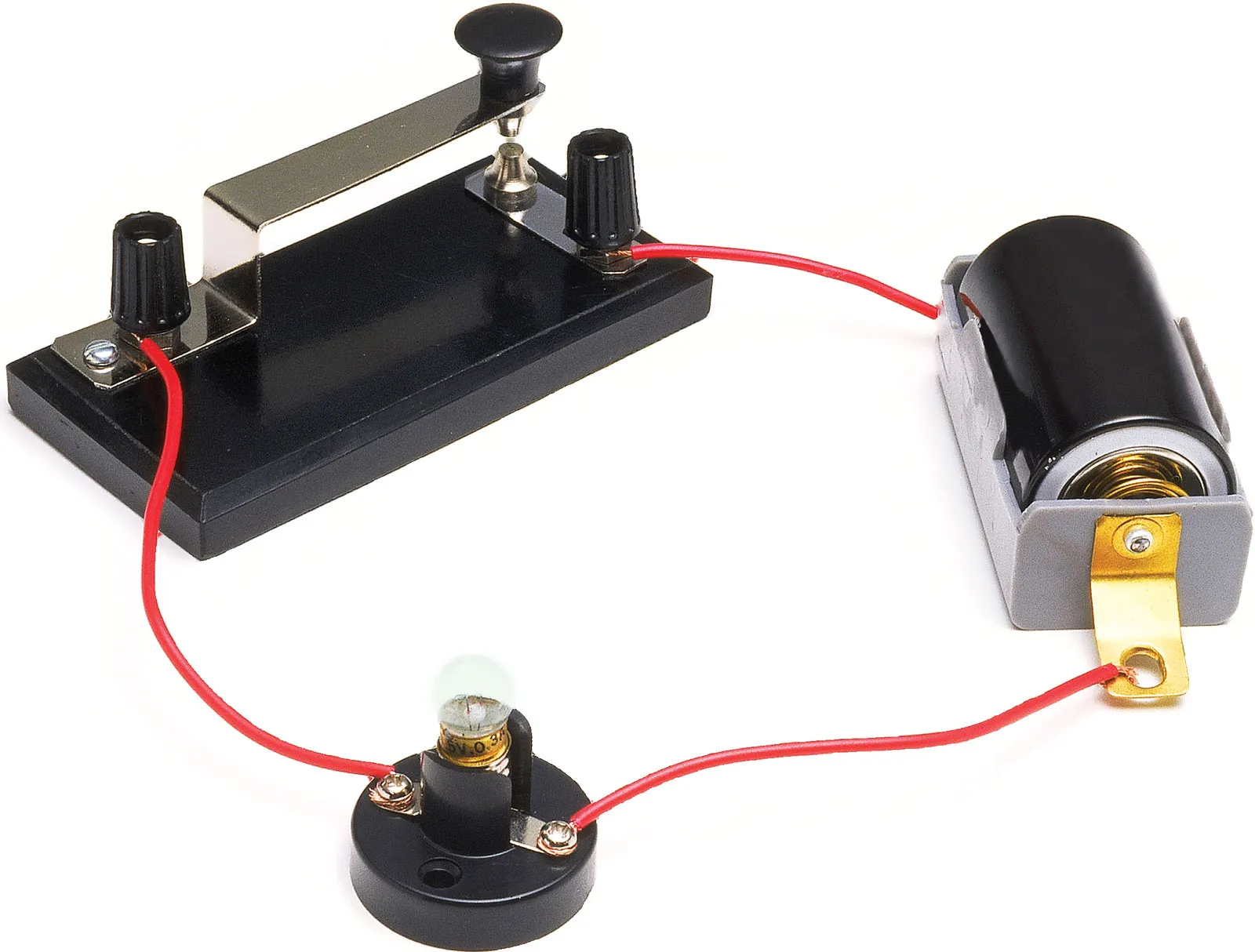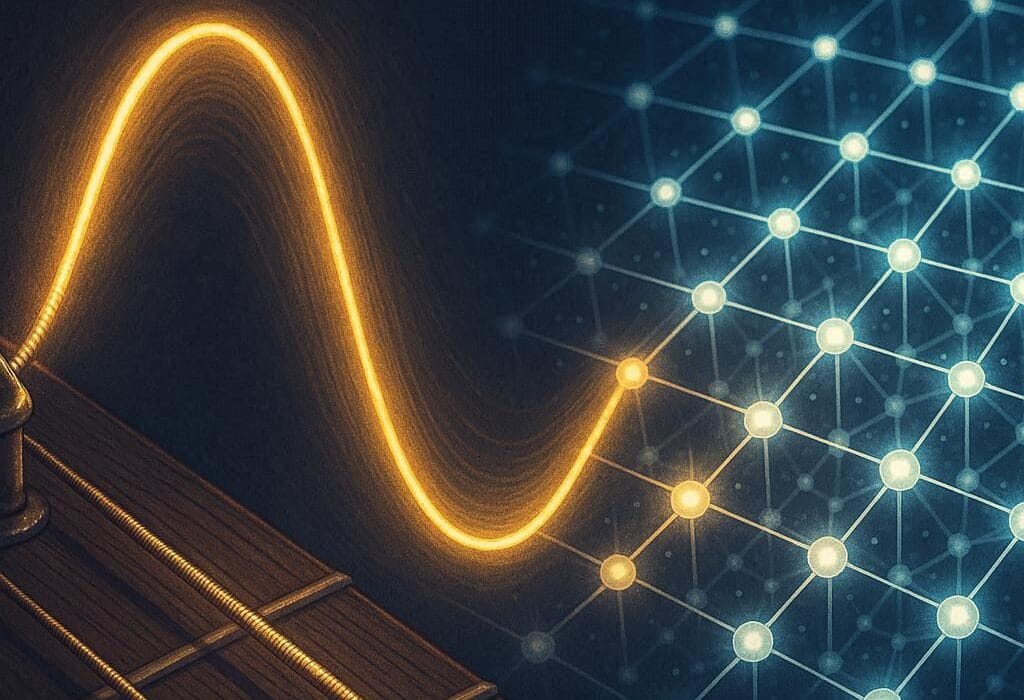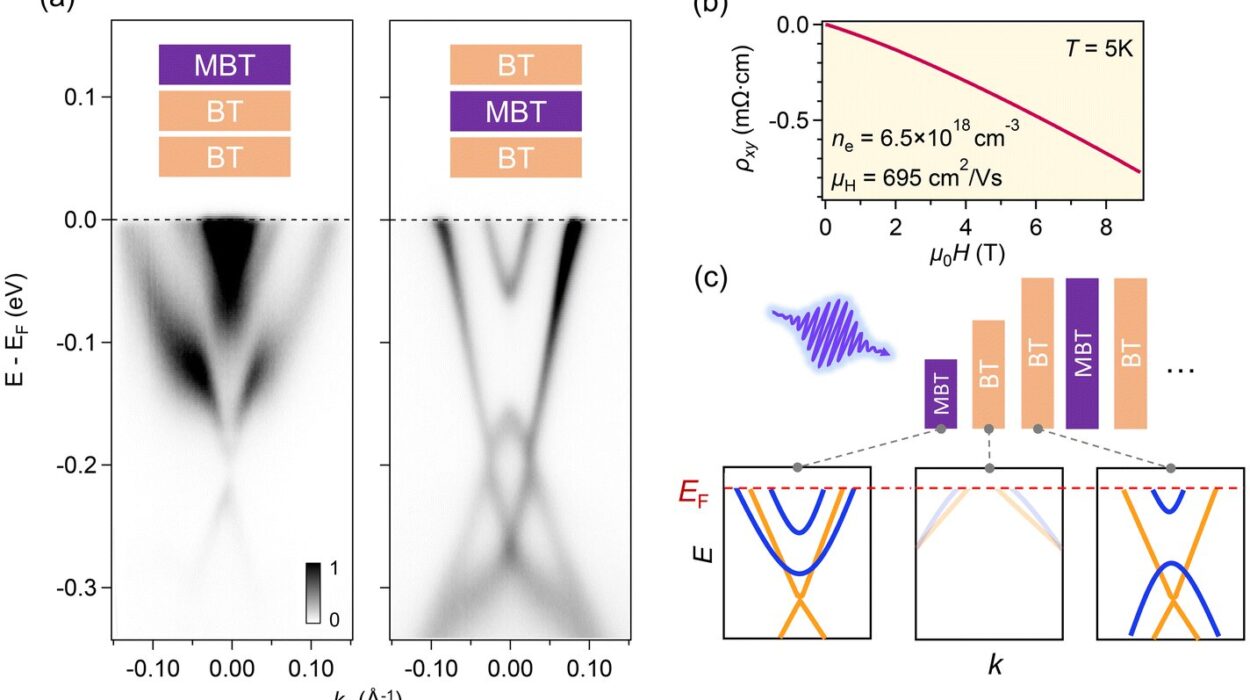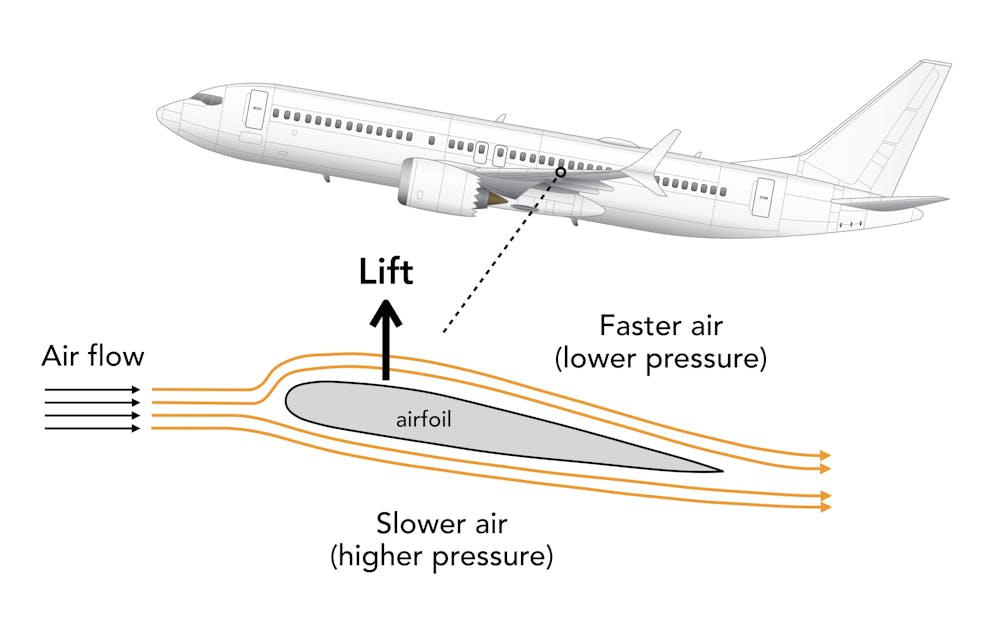Whether you’re tapping your phone, switching on a lamp, or starting your car, you’re engaging with one of the most vital physical concepts of the modern world: the electrical circuit. Circuits are the silent architects of our technological age—hidden networks of power and control that run beneath our fingertips. They light up our homes, process our thoughts on computers, and even beat within artificial hearts. But despite their ubiquity, most people only have a surface-level understanding of what a circuit actually is. What principles of physics bring them to life? How do electrons, currents, and resistors collaborate in these invisible symphonies of energy?
In this deep dive into the fascinating world of circuits, we’ll peel back the layers of silicon and copper to reveal the physics that drives modern electronics. From the simplest flashlight to the complexity of a supercomputer, circuits are built on fundamental laws of nature that govern how electricity flows. This journey isn’t just about wire and metal—it’s a voyage into the essence of what powers our world.
The Birth of a Circuit: What Does It Really Mean?
At its core, a circuit is a closed loop through which electric current can flow. This current—the flow of electric charge—needs a complete path to move. Imagine water flowing through a pipe: if the pipe is continuous, water flows; if it’s broken, the water stops. Similarly, in a circuit, if there’s a break, the electrons can’t travel, and the device ceases to function.
But circuits aren’t just about allowing electrons to run wild. They guide, control, and regulate that flow using a carefully orchestrated mix of components: power sources, resistors, capacitors, transistors, diodes, and more. Each has a role to play, and each interacts according to the fundamental laws of physics. These laws—Ohm’s Law, Kirchhoff’s Laws, and the principles of electromagnetism—form the skeleton upon which the nervous system of electronics is built.
Electricity: The Fuel of a Circuit
To understand circuits, we must first appreciate electricity—not just as a utility we use every day, but as a physical phenomenon deeply tied to the fabric of matter. Electricity is the movement of electrons, the tiny negatively charged particles that orbit the nuclei of atoms. When atoms give up or gain electrons, charges become unbalanced, and this imbalance drives electrical flow.
Electrons are mobile in conductive materials, particularly metals like copper and silver, where they can easily hop from one atom to another. The pressure that pushes these electrons through a conductor is called voltage (measured in volts), while the rate of flow—the number of electrons passing a point per second—is called current (measured in amperes or amps). Resistance, measured in ohms, describes how much a material opposes the flow.
These three—voltage, current, and resistance—are intricately linked through Ohm’s Law, one of the most fundamental equations in electronics:
V = I × R
Voltage equals current multiplied by resistance. This equation is the cornerstone of circuit design and analysis.
The Basic Ingredients: Power, Path, and Load
Every functional circuit is built from three essential components: a power source, a conductive path, and a load.
The power source—typically a battery or power supply—creates the potential difference (voltage) that drives current through the circuit. It’s like a water pump, creating the pressure needed to push water through pipes.
The path is the conductive material, often made of copper wires or printed traces on a circuit board. It provides a medium for the electrons to travel.
The load is the part of the circuit that uses electricity to do work—like lighting a bulb, running a motor, or powering a microprocessor. Loads resist the current to convert electrical energy into another form, such as light, heat, or motion.
Add a switch, and you have control. Flip it, and the circuit closes, letting current flow. Flip it again, and you break the circuit—no flow, no function.
Types of Circuits: Simple and Complex
The simplest circuits are series circuits, where components are arranged one after another, like beads on a string. In a series, current flows through each component in turn. The drawback is that if one component fails, the whole circuit is broken—much like an old string of Christmas lights where one burned-out bulb dooms the entire strand.
Then there are parallel circuits, where components are connected across common points, creating multiple paths for current. If one branch fails, the others can still function. This is how most home wiring systems are designed: lights and outlets operate independently.
More complex circuits are combinations of series and parallel arrangements, forming vast networks capable of performing sophisticated functions. In digital electronics, these networks are governed not just by the flow of current but by logical operations—bits, logic gates, and integrated circuits that perform calculations, store memory, and execute code.
Resistance: Controlling the Flow
Not all electrons travel freely. Materials push back against them. This resistance is what allows us to control the behavior of circuits. Think of it like a narrow pipe restricting water flow or friction slowing a rolling object. Resistors are components designed to limit current, protect sensitive parts, or divide voltage. The value of a resistor determines how much it impedes the flow of electrons.
Temperature, material, and physical dimensions all affect resistance. For example, as temperature rises, resistance in most metals increases. This is why electronics can fail when they overheat: higher resistance disrupts the flow of current and leads to instability or failure.
Color-coded bands on resistors allow technicians and engineers to quickly identify their resistance values, a clever shorthand that speaks to the fusion of art and science in circuit design.
Capacitors and Inductors: The Masters of Storage and Delay
Beyond resistors, two other passive components play crucial roles in circuits: capacitors and inductors. A capacitor stores electrical energy in an electric field, created between two conductive plates separated by an insulating material. When connected to a power source, it charges up—electrons build on one plate and are depleted from the other.
Capacitors release their stored energy when needed, acting like mini-batteries. They’re used to smooth out voltage fluctuations, filter signals, or time operations in circuits.
Inductors, on the other hand, store energy in a magnetic field generated by a coil of wire. When current flows through the coil, a magnetic field is produced. Inductors resist changes in current, which makes them useful for tuning circuits, blocking high-frequency signals, or storing energy in switching power supplies.
Together, capacitors and inductors add nuance and depth to circuit behavior, allowing engineers to shape how circuits respond over time.
Diodes and Transistors: Gatekeepers and Amplifiers
While resistors, capacitors, and inductors control and store, diodes and transistors are active components that shape and direct the flow of electricity.
A diode is a one-way valve for electrons. It allows current to flow in one direction but blocks it in the other. This property makes diodes essential for converting alternating current (AC) to direct current (DC), a process known as rectification.
Transistors, however, are the real game-changers. Invented in the mid-20th century, transistors revolutionized electronics. They can amplify signals, act as switches, and form the building blocks of modern digital circuits. A transistor has three parts—emitter, base, and collector—and a small input at the base can control a much larger current between the emitter and collector.
Transistors made it possible to move beyond bulky vacuum tubes and build smaller, faster, more reliable electronics. Millions (even billions) of transistors now reside on a single computer chip, forming the heart of CPUs, GPUs, and memory units.
Logic Circuits: From Electrons to Intelligence
With transistors came logic circuits—arrangements that process binary information using logic gates. Each gate—AND, OR, NOT, NAND, NOR, XOR, and XNOR—performs a simple operation on binary inputs. For instance, an AND gate only outputs a “1” if both inputs are “1”.
By combining thousands or millions of these gates, circuits can perform complex computations, store data, and even make decisions. This is the essence of digital electronics: using physics to build logic.
Microcontrollers, microprocessors, and computers all rely on these logic circuits. The simple act of browsing the web, watching a video, or playing a game is powered by trillions of logical operations happening every second, all thanks to circuits orchestrating electrons in precise, predictable ways.
Printed Circuit Boards: Highways of the Digital Age
As circuits became more complex, new ways were needed to organize and interconnect components. Enter the printed circuit board (PCB)—a flat board made from insulating material with conductive paths etched or printed onto it. Components are mounted on the surface and connected through these paths, creating compact, reliable assemblies.
PCBs revolutionized the manufacturing of electronics, replacing hand-wired boards and allowing for mass production. Surface-mount technology made it possible to place components directly on the board’s surface, leading to even smaller and more powerful devices.
Multilayer PCBs allow for dense packing of circuitry, with separate layers handling power, signal, and ground connections. Designing a PCB is an art that balances electrical performance, mechanical integrity, and manufacturability.
Power Electronics: Taming the Beast
Handling power is no small feat. Power electronics is the field that deals with the conversion and control of electrical energy in circuits that handle significant voltages or currents. It involves switching devices, transformers, and control systems to regulate everything from the power supply in your laptop to the drive motors in electric vehicles.
Inverters, converters, and regulators are power circuits that transform electricity into the forms we need—AC to DC, high voltage to low, or constant to variable. They must do so efficiently, safely, and reliably, often under extreme conditions.
This field merges deep physics with practical engineering. It considers electromagnetic interference, thermal management, and reliability to ensure the devices that rely on circuits keep running without a hitch.
Embedded Systems: Circuits with a Purpose
A growing branch of electronics is embedded systems—circuits designed to perform dedicated functions within larger systems. Think of the control board in your washing machine, the electronics in your car’s anti-lock brakes, or the brain inside your smart thermostat. These are not general-purpose computers but purpose-built circuits that interact with the physical world through sensors and actuators.
Embedded systems run software stored in memory chips and are programmed to respond in real time to changes in the environment. They form the invisible intelligence behind smart technology, the Internet of Things (IoT), and modern automation.
Understanding the circuits behind these systems is key to designing devices that are fast, efficient, and responsive. It’s a synthesis of hardware and software, logic and physics.
Circuits and the Future: Quantum and Beyond
As we push the limits of conventional electronics, circuits are venturing into new frontiers. Quantum circuits, for instance, operate on the bizarre principles of quantum mechanics. Instead of classical bits, they use qubits—quantum bits that can exist in multiple states at once.
Quantum circuits don’t just process information differently—they redefine what information is. Entanglement, superposition, and coherence become the new tools of computation. While still in early development, quantum circuits promise to solve problems that classical computers would take millennia to crack.
Another emerging frontier is neuromorphic circuits, designed to mimic the structure and function of the human brain. These circuits use networks of artificial neurons and synapses to perform tasks like pattern recognition and decision-making with remarkable efficiency.
As electronics continues to evolve, the fundamental physics of circuits remains our compass. The journey from simple copper wires to quantum logic gates is guided by the same principles of charge, current, and energy.
Conclusion: A Web of Invisible Wonders
The next time you power on a device, take a moment to consider the intricate web of physics beneath your fingertips. Circuits are not just tools—they are the nervous system of the modern world. They channel the flow of electrons with the elegance of mathematics and the precision of engineering. They turn raw power into intelligence, enable machines to think, and connect the globe through invisible pulses of light and electricity.
From their humble beginnings as loops of wire and batteries to their current form as multi-layered, microscopic masterpieces, circuits tell a story of human ingenuity guided by the laws of nature. They are the silent partners in every moment of modern life, and their story is far from over.
As we look to the future—from smart dust to quantum networks—circuits will continue to evolve, adapting to our dreams and ambitions. But at their core, they will always remain what they are: a beautiful dance of electrons, choreographed by the physics that governs our universe.






